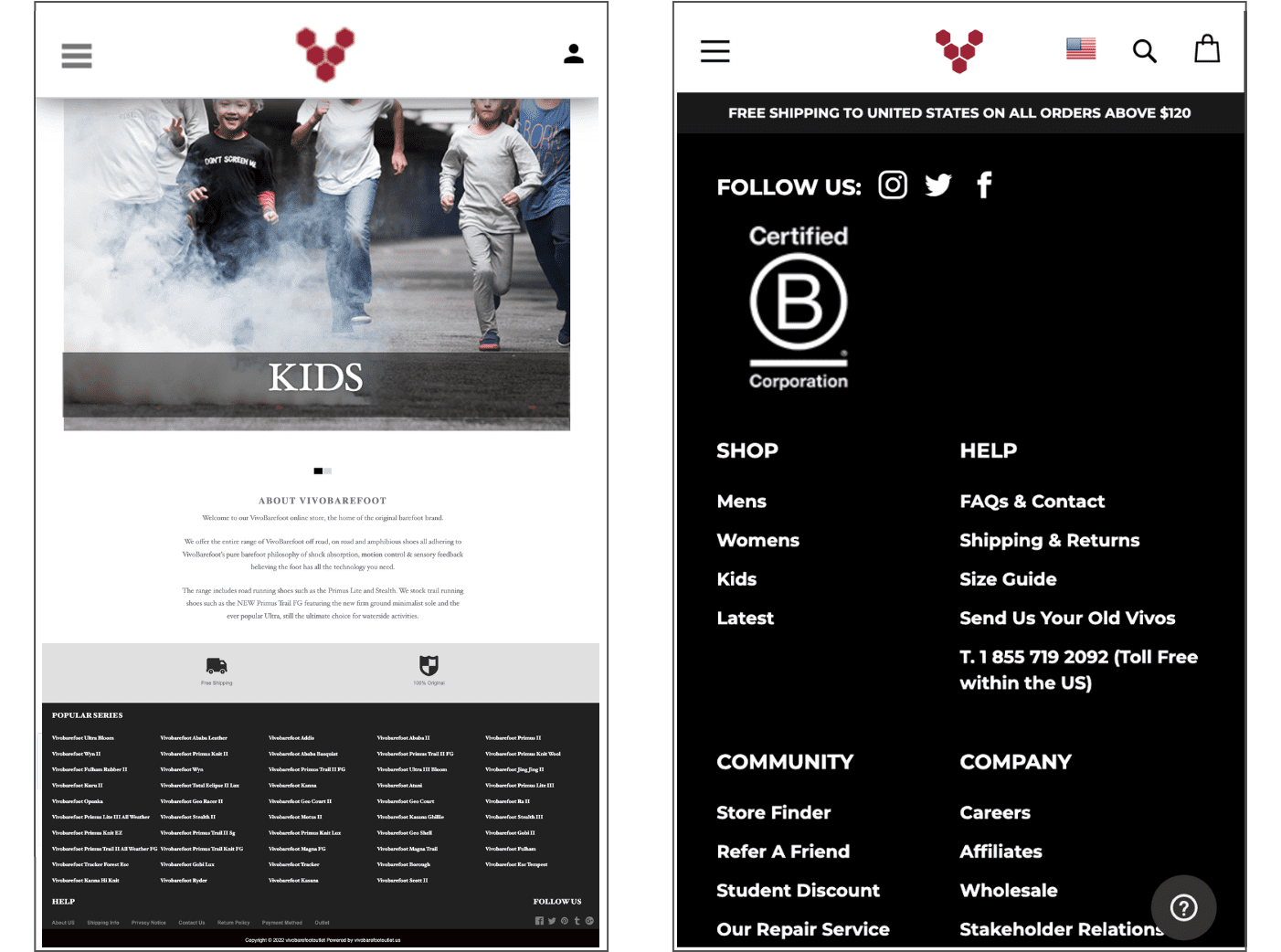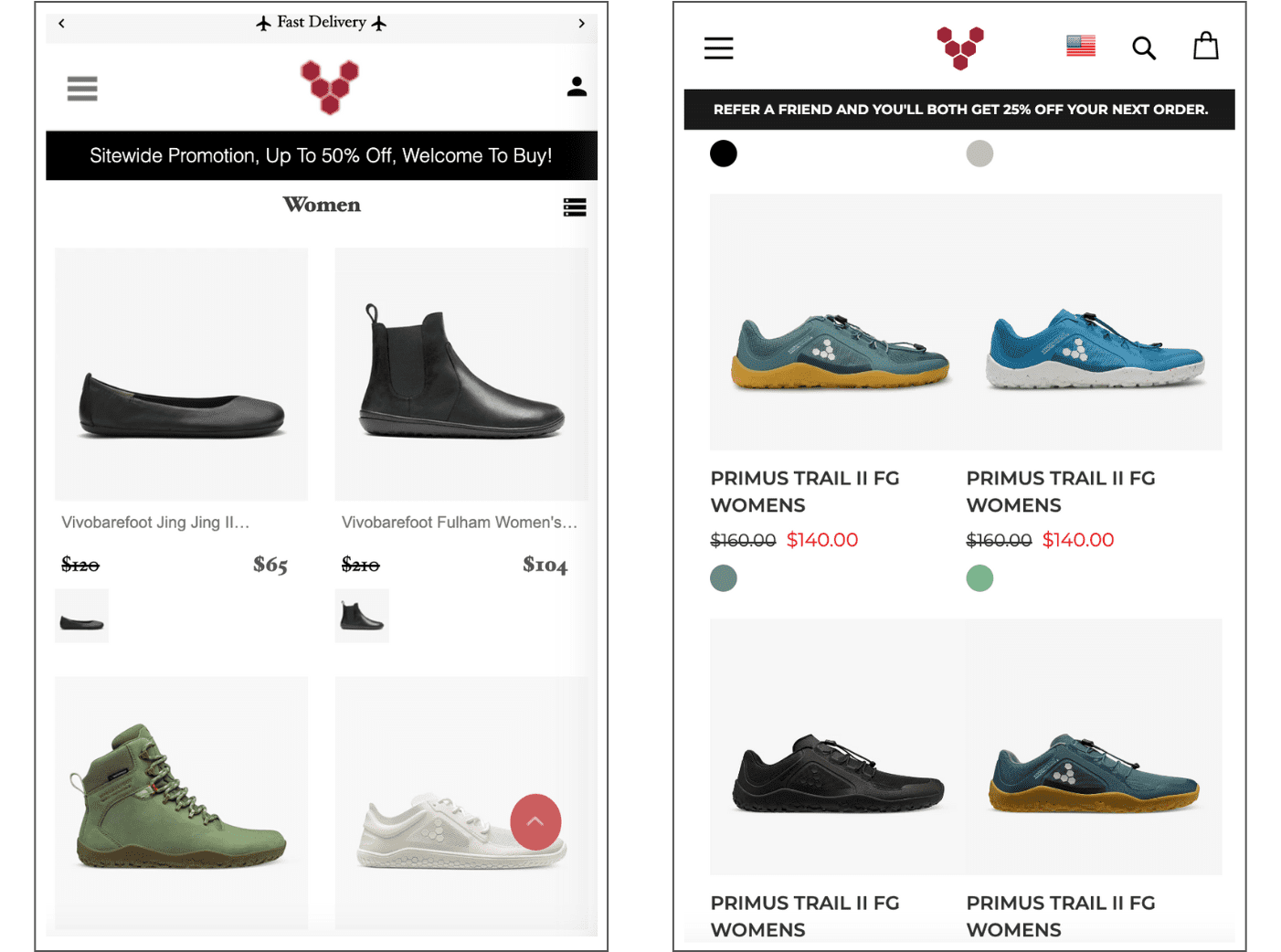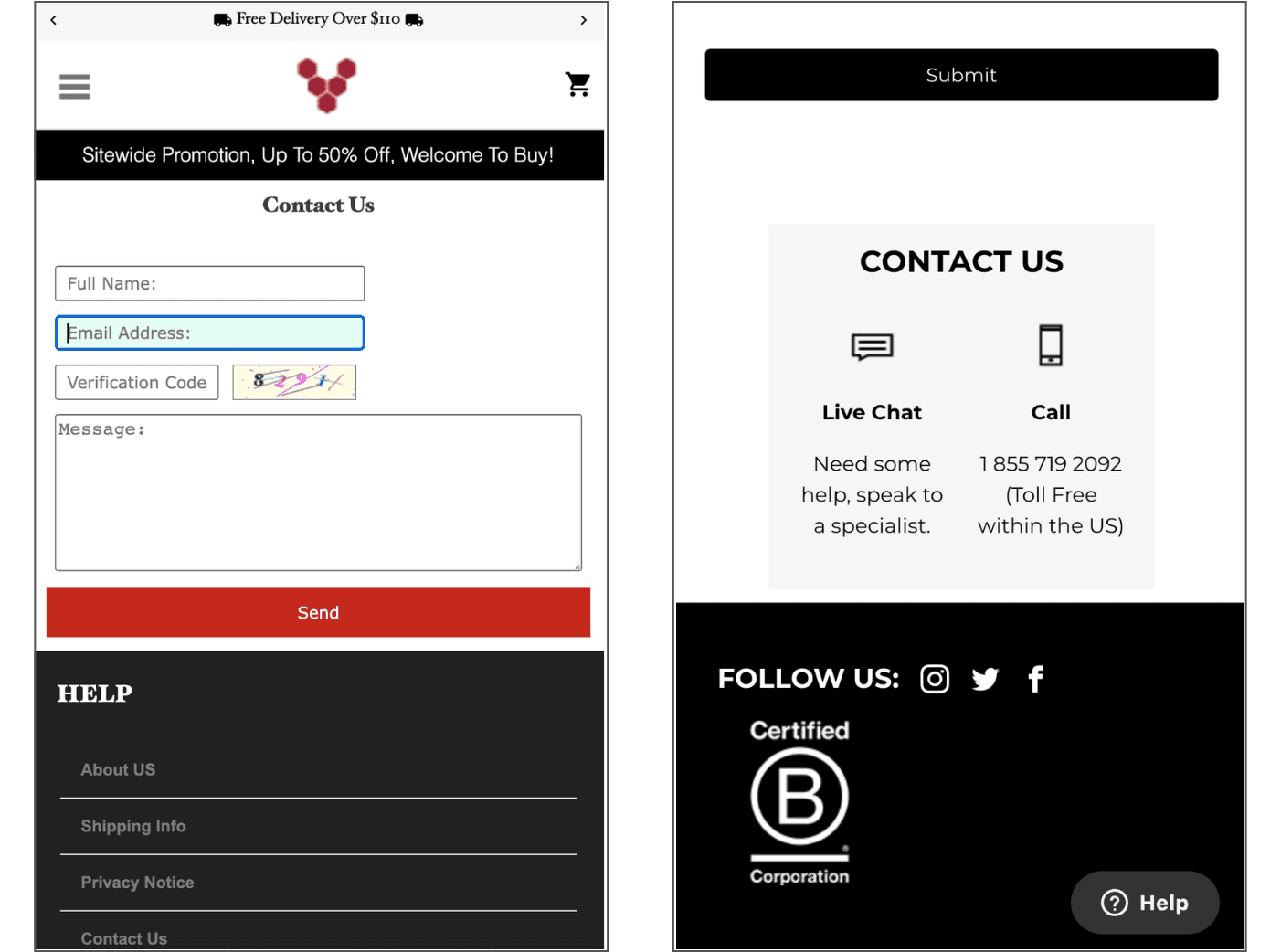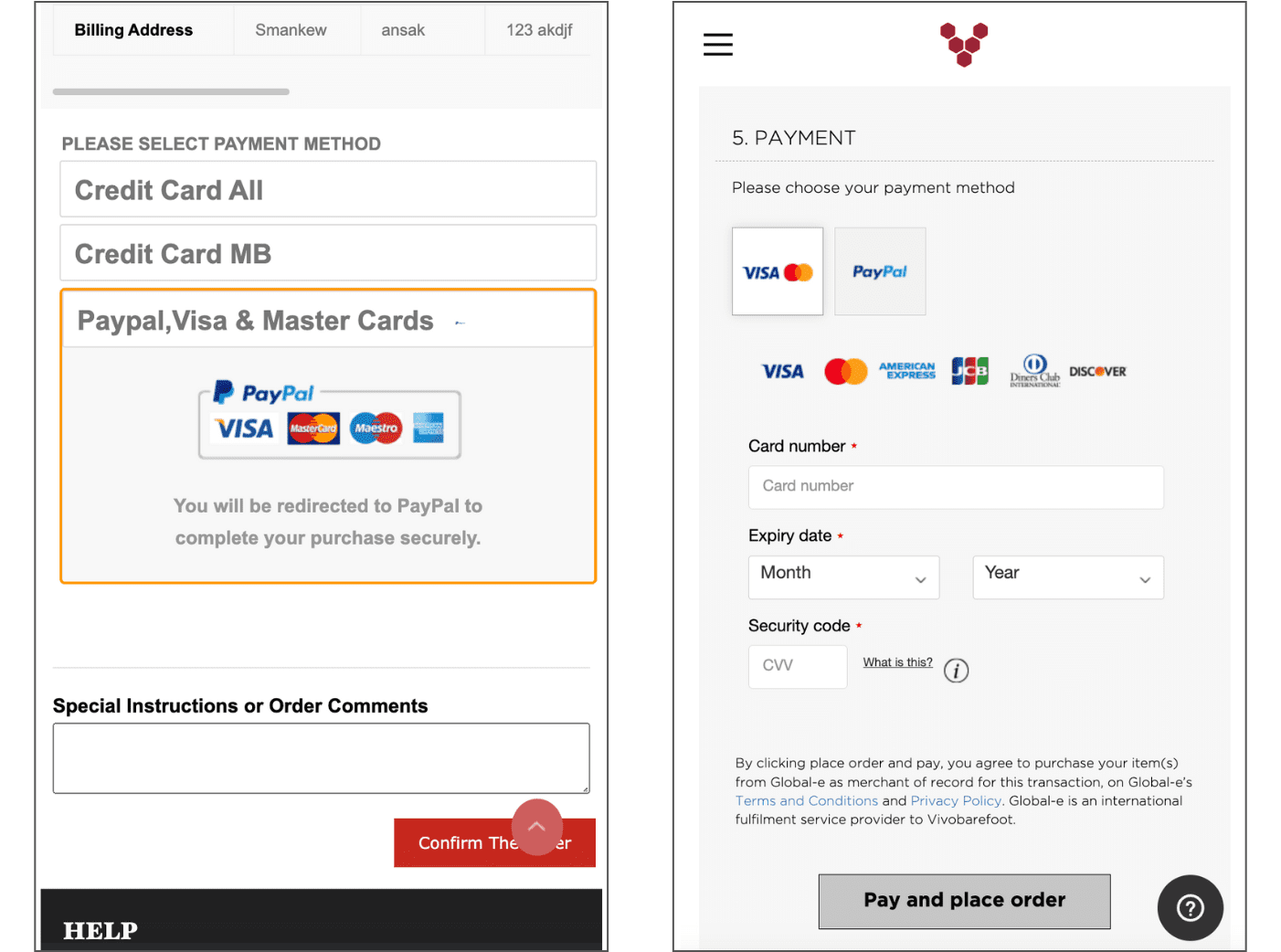10 signs a shopping website is fake



For millions of consumers around the globe, the month of November has become a frantic haze of shopping and spending thanks to the likes of Singles’ Day, Black Friday, and Cyber Monday lining up.
Taking place on November 11, and primarily celebrated in Asia, Singles’ Day is considered the world’s biggest online shopping event. This is followed by Black Friday, the post-Thanksgiving weekend sales extravaganza that falls on November 29 this year, and Cyber Monday, on December 2.
Throw in a plethora of smaller sales that pop up randomly to mark the start of the holiday season, and it’s hard not to get caught up in the excitement of looking for the best deals. However, letting your guard down is exactly what scammers are counting on.
While significant online shopping holidays draw in the masses, they also attract a mass of fake e-commerce sites that have been specially designed to relieve you of more than what you’d save on a new TV, game console, or designer labels.
Special offer for safer shopping
Shop securely this Black Friday and Cyber Monday with ExpressVPN. Protect your data and enjoy peace of mind with unlimited access to ultra-fast, secure VPN servers—plus, get up to 6 extra months free. Don’t miss out on our best deal of the year!
What is a fake shopping website?
Scammers create fake shopping websites that look like genuine e-commerce stores but are designed to steal your hard-earned cash, passwords, or personal information.
While fraudsters create these sites in the hopes that unsuspecting victims may stumble across them online, most use phishing scams (soliciting visitors to the fake site via scam emails, texts, and social media ads) to lure them in.
Some faux e-stores are entirely unique in their design, but many mimic trusted retailers by using familiar logos, stolen images, and a URL that’s easily mistaken for the real thing. To the untrained eye, these sites usually look safe.
Most of these phony websites offer luxury items such as popular brands of clothing, jewelry, and electronics at a fraction of the usual cost. These deals usually come with the promise of free shipping and overnight delivery, making them even more appealing.
Not surprisingly, fraudulent sites flourish during the holiday season, and during super shopping sales events like the ones mentioned above, exploiting online shoppers who are on the hunt for low prices and fast delivery.
Why are fake shopping websites dangerous?
Fake websites are created by scammers with the sole purpose of tricking deal-hungry consumers into either buying products that don’t exist, sharing sensitive information (such as account passwords and financial information), or downloading dangerous malware.
While a tiny percentage of these copycat sites do sometimes deliver ordered merchandise—likely knockoffs—most want to either rob you of your money or harvest your personal information so they can commit identity theft or financial fraud
10 easy ways to identify fake shopping websites
Make sure you don’t get duped by dodgy deals this holiday season! Look out for these signs, and learn how to identify fake websites faster than you can say ‘scam-azon’.
1. URL red flags
The fastest way to tell if a site is secure is by checking for HTTPS, with a padlock next to it, in the URL. HTTPS indicates that the site uses SSL encryption, which is superior to HTTP. With HTTPS, nobody between the website and the user can read the data.
Another telltale sign is if the site’s URL looks suspiciously similar to the official address of a genuine retailer, but is slightly off.
For example, Vivobarefoot is a well-known, globally established company that specializes in minimalist shoes known as barefoot footwear. They’re usually sold via their official website, through authorized online retailers (like Amazon), or in stores.
For customers in the U.S., the company’s legitimate URL is vivobarefoot.com/us. However, there are dozens of copycat sites pretending to be the official site by slightly altering its domain name—including the highly suspect, vivobarefootoutlet[dot]us.
Avoid spoof domains by manually typing a retailer’s URL into your browser. Also be skeptical of clicking any links you receive by email, text, or direct message, unless you’re sure it came from the company itself.
2. Dodgy domain history
The domain names of fake shopping websites have likely only been registered for a short period of time—with their inception usually leading up to popular holidays and big shopping events.
Going back to the Vivobarefoot example, a quick search of the legitimate company domain reveals it was created over 18 years ago, which makes sense considering it’s an established brand. Conversely, the alleged copycat site was only created eight months prior to our search.

There are a handful of free tools online that you can use to check the age of a website, including WHOIS. You can also capitalize on Google’s free safe browsing transparency search to check if a site is trustworthy or not. Just pop the URL into the search bar, and Google will give you an assessment of the site.
3. Pixelated images
Counterfeit sites predominantly feature stolen imagery—usually lifted off a legitimate retailer’s site or taken off of Google. As a result, most of the images featured on scam sites are low quality, and sometimes appear pixelated.
FAKE VS. REAL

4. Typos & bad grammar
Legitimate companies usually have a team of editors who oversee website copy before launching their sites. Online scammers don’t take the time, or might not have the ability, to craft compelling sales copy. While some lift a lot of the language from genuine sites, many are prone to making obvious grammar and spelling mistakes.
FAKE

5. Amateur website design
Scammers no longer need engineers and designers to create e-commerce stores. Online website builders, and some online marketplaces like Shopify, allow users to design their own storefronts in just a few steps.
However, fraudsters tend to move quickly and often don’t want to take too long to build a fake shopping website, as it could easily be identified as fraudulent and get taken down. This is why they tend to opt for simple, inexpensive website templates that come with limited features—often just enough to convince unsuspecting customers that they’re the real deal.
Next time you’re on a shopping site, go exploring. Inspect all elements on the homepage and take your time running through some of the other pages. Oversimplified, and poorly designed sites can be a dead giveaway of legitimacy, as can poorly formulated sitemaps.
FAKE VS. REAL

6. Bargain-basement prices
Shopping holidays like Black Friday and Singles’ Day are all about scoring amazing deals at heavily discounted prices. But if the cost of an item you’re shopping for is drastically lower than what you’ve seen it going for on other sites, you’re probably being scammed or the item is a counterfeit.
Instead, make sure you look up the price history of the goods you want to score in a sale. Then, check how much each item is going for on other sites running similar offers. A good rule of thumb is that if a site advertises prices that are 50% off and above, you should take the necessary steps to confirm it’s not fake.
Basically: If the deal looks too good to be true, it probably is.
FAKE VS. REAL

7. Limited contact details
When buying an item online, first confirm the online seller’s physical address, support email, and phone number in case you have any questions or concerns about your order.
Raise your suspicions if the site only has a fill-in contact form, the customer service email is a random Yahoo or Gmail account instead of a corporate one, or the contact details are non-existent.
FAKE VS. REAL

8. Complex or non-existent returns policy
To ensure they comply with the laws surrounding consumer protection rights, reputable retail brands are transparent about their return and refund policies. Scammers, on the other hand, often don’t bother putting much thought into the return policies that feature on their sites—if they choose to include one at all.
Before purchasing anything from an online retailer, make sure you read its refund policy. Is it clear and does it meet your expectations as a consumer? If a site’s return policy is in any way convoluted or sketchy, leave it immediately.
Genuine retail sites should also include a shipping policy, and basic legal information such as terms and conditions, a privacy policy, and a data collection policy. If you can’t find this information, the site is likely a scam.
9. Questionable payment options
Legitimate brands will always give you the option of paying with traditional and secure methods—including credit and debit cards, cash on delivery, or pay later options, such as Klarna and Afterpay.
Fake shopping websites usually try to force you to pay for goods using non-reversible and non-traceable payment methods. These include gift cards and cryptocurrencies.
While debit and credit card issuers will likely protect you against fraud, it’s good practice to always keep a close eye on your bank accounts throughout the big shopping holidays to make sure that no unexpected amounts are being debited.
FAKE VS. REAL

10. Bad social media
Most legit businesses have some sort of social media presence as it serves as one of the best ways to advertise their products and services. If an online retailer doesn’t have an overt social media presence—or the social media icons displayed on their site lead nowhere—the chances of it being fake are high.
For example, when clicking on any of the social media icons at the bottom of the Vivobarefoot scam site homepage, it only gives you the option to share the site’s URL on your own social media pages.
Also, be on the lookout for online reviews left by other users about the site in question. While scammers often post fake reviews on their sites to look more legitimate, if it’s a more established scam, there could be an onslaught of negative reviews from previous victims littering Google or Trustpilot.
Tips to avoid fake shopping websites
As we gear up for the festive shopping season, with events like Singles Day, Black Friday, and Cyber Monday around the corner, it’s important to be on guard. To ensure a secure shopping experience, follow these tips:
Be careful about where you click
Avoid clicking on links in emails, text messages, or social media posts, as they may lead you to fake websites. Instead, go directly to the website of the retailer you want to shop at by typing their URL into the address bar of your browser.
Inspect the website carefully
Look for signs that a website is fake, such as unusual domain names, poor design, grammatical errors, or low-quality images.
Do your research
Before making a purchase from an unfamiliar retailer, read reviews of the website and the retailer to see if other customers have had positive experiences.
Avoid pop-up windows
Be cautious of websites that bombard you with excessive pop-up ads, especially if they seem unrelated to the products you’re browsing.
Use reputable price comparison tools
If you’re using price comparison tools or apps, make sure they are from trusted sources to avoid accidentally clicking on fraudulent links.
Stay informed about current scams
Stay updated on common online shopping scams and be aware of any new tactics scammers might use. Government agencies and consumer protection websites often provide resources to help you stay informed.
Protect yourself from fake websites by keeping your software and antivirus updated. Using ExpressVPN adds additional security by encrypting your traffic and hiding your IP address, making it harder for malicious sites to target you. This Black Friday and Cyber Monday, get even more peace of mind—enjoy ultra-fast, secure servers and get up to 6 extra months free.
Using a credit card rather than a debit card will provide some degree of protection against losing your money to a fraudulent transaction. If you’re charged for an item you never received or that is not as described, you can dispute the charge with your credit card company.
What to do if you’re a victim of a fake shopping website
Even if you’ve diligently followed the steps to identify a fake shopping website and taken precautions to avoid them, if you suspect you’ve given your information or money to a fake shopping website, do this straight away:
- Call your bank or credit card company’s fraud departments immediately and let them know a scammer has gotten access to your accounts. Many finance companies offer fraud protection that covers certain charges made without your consent.
- If you have entered any account information during your dealings with the fake site (social media, email, banking, etc.), change your passwords and enable two-factor authentication (2FA) to regain control of your accounts.
- If you downloaded anything from the fake site or suspected phishing attempt, use antivirus software to scan your devices for malware and remote access software that scammers may have installed.
- Try to reverse the fraudulent payment by reaching out to the company that facilitated it. For example, if you bought an item from an online store via your PayPal account (and not a spoof PayPal page), PayPal Buyer Protection should cover you.
- Log a complaint with the platform if you bought an item from a fraudulent marketplace on eBay or Amazon, so that the e-commerce giants can investigate the e-seller and initiate a refund.
- File a police report if you have been scammed while shopping online. Not only will this increase the chances of the fraudsters being caught, but your bank, credit card company, or insurance company will likely request a copy of the report before paying out a claim.
- File an identity theft report with the FTC if you’re based in the U.S. This is a critical step for disputing fraudulent transactions and fixing your credit if you’re ever a victim of identity theft.
How to report a fake shopping site
If you identify a scam shopping site, you can report it to Google or Microsoft, as well as the FTC (if you’re in the U.S.) or the FBI’s Internet Crime Complaint Center (IC3). Be sure to include as many details as you can about why you believe the site is fake.
Here’s to making the internet safer for everyone!
FAQ: About fake shopping sites
How can I tell if a website is selling fake items?
- Check the domain name: Fake websites often have domain names that are similar to those of legitimate websites but with slight misspellings or extra words. For example, a fake website selling Nike shoes might have the domain name "nikeoutletstore.com.cn" instead of "nike.com."
- Look for a padlock symbol: When you're on a website that uses HTTPS, you'll see a padlock icon in the address bar. This means that the website's connection is encrypted and your data is protected. However, scammers can also use HTTPS certificates, so it's not a guarantee that a website is legitimate.
- Check the website's content: Fake websites often have poorly written content, with grammatical errors and typos. They may also use stock photos or images that are copied from other websites.
- Be wary of deals that seem too good to be true: If a website is selling brand-name items at significantly lower prices than other retailers, it's likely that the items are fake.
- Read reviews of the website: If you're unsure about a website, do some research to see if other people have had negative experiences with it. You can also check websites like Trustpilot and Scamadviser to see if there are any reports of the website being fraudulent.
If you have received an item that you suspect is fake, there are a few things you can do:
- Contact the seller: Let the seller know that you believe the item is fake and request a refund. If the seller is unwilling to cooperate, you may need to file a dispute with your payment processor (e.g., credit card company, PayPal).
- Report the seller to the authorities: You can report the seller to your local consumer protection agency or to the authorities in the country where the seller is located.
- Contact the brand of the item you bought: Many brands have anti-counterfeiting programs and may be able to help you determine if the item is fake. They may also be able to provide you with information on how to report the counterfeit item to the authorities.
What can I do if I ordered something from a fake website?
- Contact your bank or credit card company to dispute the charge. This may help you to get your money back.
- Report the website to the authorities. You can report the website to the Federal Trade Commission (FTC) in the United States or to the appropriate authorities in your country. This helps to warn other people about the scam and may lead to an investigation.
- Contact the brand of the item you bought. If you bought a fake brand-name item, you can contact the brand's customer service department. They may be able to help you to get a refund or to report the website to the proper authorities.
- Keep all of the evidence: This includes your order confirmation email, any correspondence with the website, and any photos or videos of the item you received. This evidence will be helpful if you need to file a dispute with your bank or credit card company or if you report the scam to the authorities.
- Change your passwords: If you used the same password for the fake website as you use for other websites, change your passwords immediately. This will help to protect your other accounts from being compromised.
- Monitor your credit report for fraudulent activity: It's a good idea to check your credit report regularly for any unauthorized charges. You can get a free copy of your credit report from each of the three major credit bureaus once per year at annualcreditreport.com.
Here are some additional tips:
If you think you may have been a victim of a fake website scam, it's important to act quickly. The sooner you report the scam, the more likely you are to get your money back.
What are the different kinds of fake websites?
- Fake online stores: These websites sell counterfeit goods, such as clothing, electronics, and pharmaceuticals. They often have low prices and attractive deals, but the products they sell are often poorly made and may not be safe to use.
- Fake news websites: These websites publish false or misleading stories that are designed to look like real news articles. They may be used to spread propaganda or to deceive people into clicking on ads.
- Phishing websites: These websites are designed to trick people into revealing their personal information, such as their credit card numbers or passwords. They often look like legitimate websites, such as bank websites or social media websites.
- Malicious websites: These websites are designed to infect your computer with malware, such as viruses or spyware. They may do this by tricking you into downloading a malicious file or by exploiting a vulnerability in your web browser.
Fake websites can be very convincing, so it is important to be aware of the signs and take precautions to protect yourself. If you think you may have visited a fake website, it’s important to take steps to protect yourself. Change your passwords for any accounts that you may have entered your information on. You should also scan your device for malware using an antivirus program.
If you have been scammed by a fake website, you can report it to the authorities and to the brand of the item you bought. You may also be able to get a refund from your credit card company.
Take the first step to protect yourself online. Try ExpressVPN risk-free.
Get ExpressVPN




Comments
Good article with useful information. For future reference avoid the ethnocentric aspects (American) or make them homogenous - unless the Federal Trade Commission deal with worldwide issues. Far too many articles on here are written from an American standpoint.
Lol don’t b so soft what a lame comment nothin to do with anything but u trying to get ur d hard by lookin like u know somethin abt the ftc lol 🤫stfu
Food for thought: Your post is barely legible, therefore, does not relay any discernible information; unfortunately, the article was not concise, hence, losing attention of potential readers; while, fully appreciating these security articles, the greatest fault lies in the audience; beggars belief of the very low uptake, measured by likes or not; personally, I would prefer concise videos, relaying this information to your users, on a more user-friendly and meaningful platform.
Thanks, good article. I am always surprised how many fall for such stuff. Besides all of that loads of people do not even update their software, an absolute must!
I’m still new at all this on line stuff, And I have learned more on this site in 5 minutes than the 2 years I’ve had my phone. Thank You